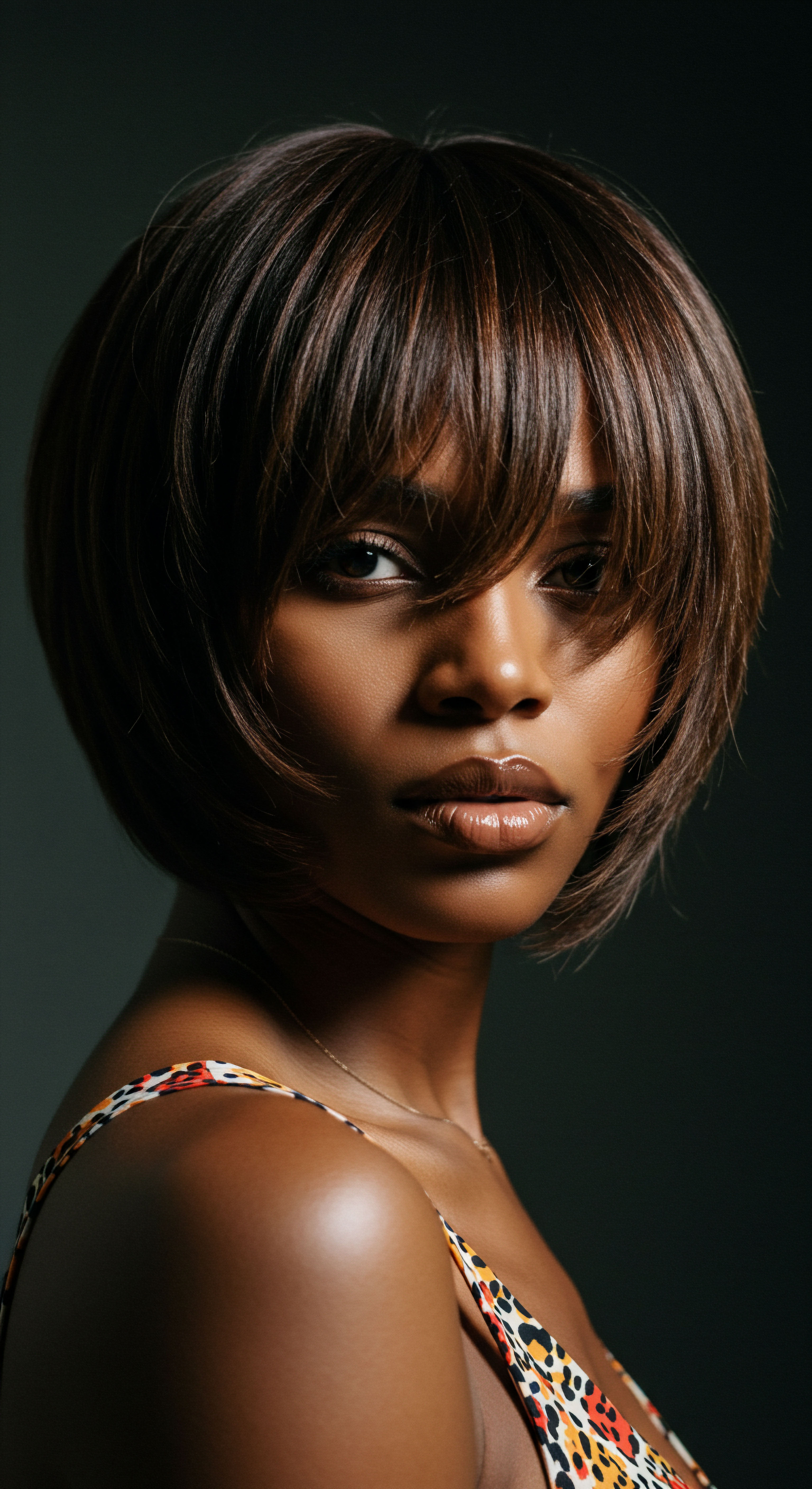
Roots
The whisper of ancient sands often carries echoes of timeless wisdom, particularly when we consider the delicate care of hair. What might seem a modern preoccupation with scalp health and lustrous strands finds a compelling lineage in the sun-drenched civilization of ancient Egypt. Far from a mere aesthetic pursuit, their approach to hair was deeply interwoven with daily life, social standing, and even spiritual belief. To truly appreciate how their methods stand alongside our contemporary routines, we must first settle into the fundamental understanding of what hair meant to them, not just as a physical attribute, but as a living canvas for identity and protection.

The Significance of Hair in Ancient Egyptian Life
For the ancient Egyptians, hair was never simply an incidental aspect of appearance. It held a profound place in their societal structure, often communicating a person’s Status, age, and even their ritual purity. Archaeological discoveries frequently include cosmetic vessels and hair ornaments in tombs, revealing the immense resources and attention dedicated to hair and personal grooming across all genders. This commitment extended beyond the living, as looking appealing was considered important even in the afterlife.
Beyond mere adornment, hair served a practical purpose in the harsh desert climate. Shaved heads or closely cropped styles, often covered by elaborate wigs, provided protection from the intense sun and helped prevent lice infestations. Priests, in particular, maintained shaved heads to ensure ritual purity, as lice would compromise their sacred duties. This blend of practicality and symbolism established hair as a central element of their existence.
Ancient Egyptian hair care was a reflection of health, beauty, and status, extending its significance into the spiritual realm.
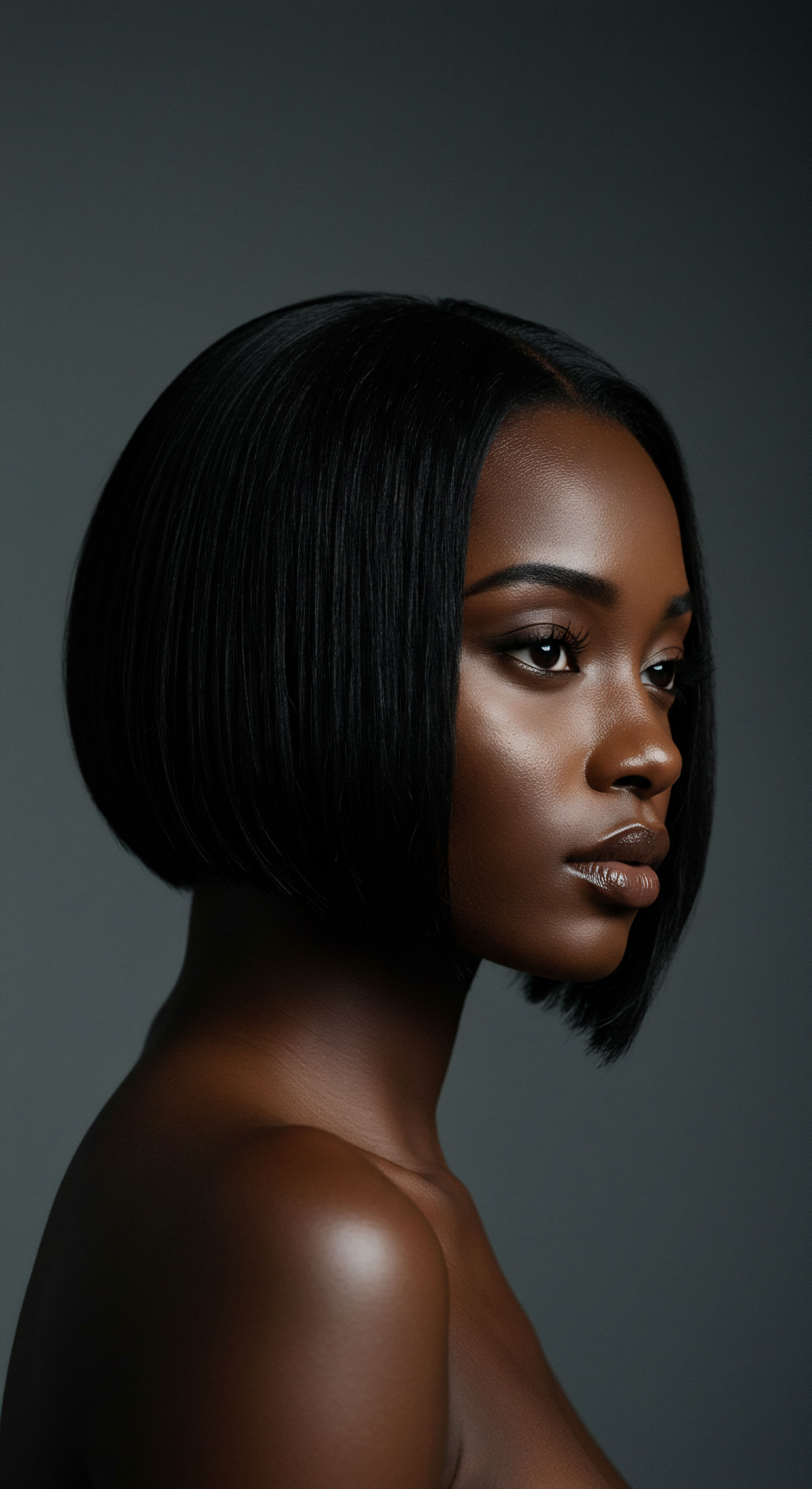
Hair Types and Their Cultural Depiction
While ancient Egyptians did not categorize hair types with the scientific precision of modern trichology, their artistic representations and the surviving mummies offer clues about the diversity of hair textures present. Historical evidence suggests that most Egyptians possessed dark, robust hair, typical of Mediterranean populations. However, depictions in tomb chapels and statues reveal a spectrum of styles, from short, square cuts to long, elaborate arrangements. These varied appearances were often achieved through wigs and extensions, allowing for a standardized aesthetic regardless of one’s natural hair.
- Children’s Hairstyles ❉ Young children, both boys and girls, often had their heads shaved or hair cut short, with a distinctive “side-lock of youth” remaining on one side. This S-shaped lock served as a hieroglyphic symbol for a child and was maintained until puberty.
- Men’s Styles ❉ Men typically wore their hair short, often leaving their ears visible, or sported distinctive short curls. Elite men, however, favored wigs that could be shoulder-length or more, sometimes elaborately arranged with strands, curls, or braids.
- Women’s Styles ❉ Women generally preferred smooth, close coiffures, natural waves, and long curls. In the New Kingdom, long hair or wigs were popular, often adorned with flowers and linen ribbons.

The Early Toolkit and Materials
The implements and substances used by ancient Egyptians for hair care, while seemingly rudimentary by today’s standards, were remarkably effective given their environment and available resources. Combs, often crafted from ivory or wood, were among the oldest hair accessories discovered by archaeologists, some dating as early as 3900 BCE. These tools were not only functional but also decorative, featuring intricate animal motifs.
For cleansing, evidence suggests the use of alkaline salts from the Wadi El Natron, which, when mixed with oils, could create a form of soap. Clay was also employed as a natural cleanser, gently removing impurities without stripping the hair’s natural oils. To condition and style, a range of natural oils and fats were paramount.
- Castor Oil ❉ A staple in ancient Egyptian hair routines, valued for its moisturizing and strengthening properties. It was often combined with honey and herbs to create hair masks that encouraged growth and added shine.
- Almond Oil ❉ Applied to keep hair silky smooth and moisturized.
- Moringa Oil ❉ Referred to as the “miracle oil,” it was prized for its light texture and rich antioxidant content, believed to nourish the scalp and promote hair health.
- Animal Fats and Beeswax ❉ These were crucial for setting styles, particularly in wigs, acting as a form of ancient hair gel.
These foundational practices and materials illustrate a clear dedication to hair well-being, rooted in a comprehensive understanding of their environment and the properties of natural elements.

Ritual
Stepping from the foundational understanding of ancient Egyptian hair culture, we now turn our attention to the daily and ceremonial practices that shaped their hair experiences. Modern routines, often a solitary act, stand in contrast to the communal and deeply embedded rituals of the past. The techniques and products they employed, though seemingly distant, reveal a surprising commonality in the underlying desire for healthy, styled hair. We might consider how their meticulous care, often performed by skilled individuals, echoes our own quest for the perfect regimen, albeit through different means.

How Did Ancient Egyptians Style Their Hair for Special Occasions?
Ancient Egyptians displayed a remarkable aptitude for hair styling, often relying on elaborate wigs and extensions for both daily wear and special events. These hairpieces, crafted from human hair, sheep’s wool, or plant fibers, were more than mere adornments; they were powerful symbols of beauty, status, and even spiritual devotion. Wigmakers would skillfully braid human hair into numerous small plaits to create these elaborate pieces.
For grand occasions, Egyptians would select their most expensive wigs. Elite men sometimes wore intricate “double-decker” wigs, featuring artificially curled hair layered over braids. Beeswax and animal fat served as setting agents, akin to modern hair gels, to keep these elaborate styles in place.
A study examining hair samples from 18 mummies, dating from 3,500 to 2,300 years ago, revealed that a fat-based substance, containing biological long-chain fatty acids like palmitic and stearic acid, was used to style hair, ensuring styles remained fixed in both life and death. This scientific finding provides concrete evidence of their sophisticated styling practices.
Beyond wigs, hair extensions were also common, either worn with natural hair or integrated into wigs to create a fuller appearance, which was highly valued. Adornments such as gold wig rings, beads, jewels, and even feathers were used to embellish these hairpieces, signifying wealth and prestige. The practice of placing a scented cone, typically used during banquets, on top of wigs, which would melt and release fragrance throughout the evening, highlights the multi-sensory aspect of their grooming rituals.

Daily Cleansing and Conditioning Practices
The ancient Egyptians maintained a regular routine of washing and conditioning their hair. While the exact frequency of hair washing remains unknown, evidence suggests it was a routine practice. For cleansing, they utilized a paste made from clay or ash mixed with olive oil, which served as a cleansing agent while also nourishing the skin. The naturally occurring sodium carbonates and bicarbonates from the Wadi El Natron also contributed to their soap-making.
Conditioning was paramount, particularly in the arid desert environment. Natural oils like castor, almond, and moringa were applied to moisturize, strengthen, and add shine to the hair. These oils were sometimes blended with honey and herbs to create conditioning masks.
Combs, made from materials such as wood, bone, or even fish bones, were used to detangle and evenly distribute these conditioning treatments. Scalp massages were also a recognized part of their routine, believed to promote circulation and stimulate hair growth.
The daily rituals of ancient Egyptian hair care emphasized cleanliness, moisture, and protection, mirroring modern priorities through different means.

Hair Removal and Its Cultural Context
Hair removal was a common and significant practice across all social strata in ancient Egypt, including priests. This custom was driven by considerations of hygiene, comfort in the hot climate, and aesthetic standards. Men typically kept their beards trimmed or clean-shaven, with some even removing all body hair.
Methods for hair removal included:
- Shaving ❉ Bronze and copper razors were used for shaving. Priests, for instance, shaved their entire bodies to maintain ritual purity.
- Depilatories ❉ Various potions were used, some surprisingly similar to modern sugaring techniques. A mixture of honey and sugar, still used today, was a common depilatory. Other more unusual concoctions included blood from a hound’s vulva.
- Tweezing ❉ Tools that served as both tweezers and razors have been found.
The emphasis on a smooth, hairless body for most Egyptians highlights a stark contrast with some modern preferences for natural body hair, yet the underlying desire for comfort and perceived cleanliness remains a common thread.
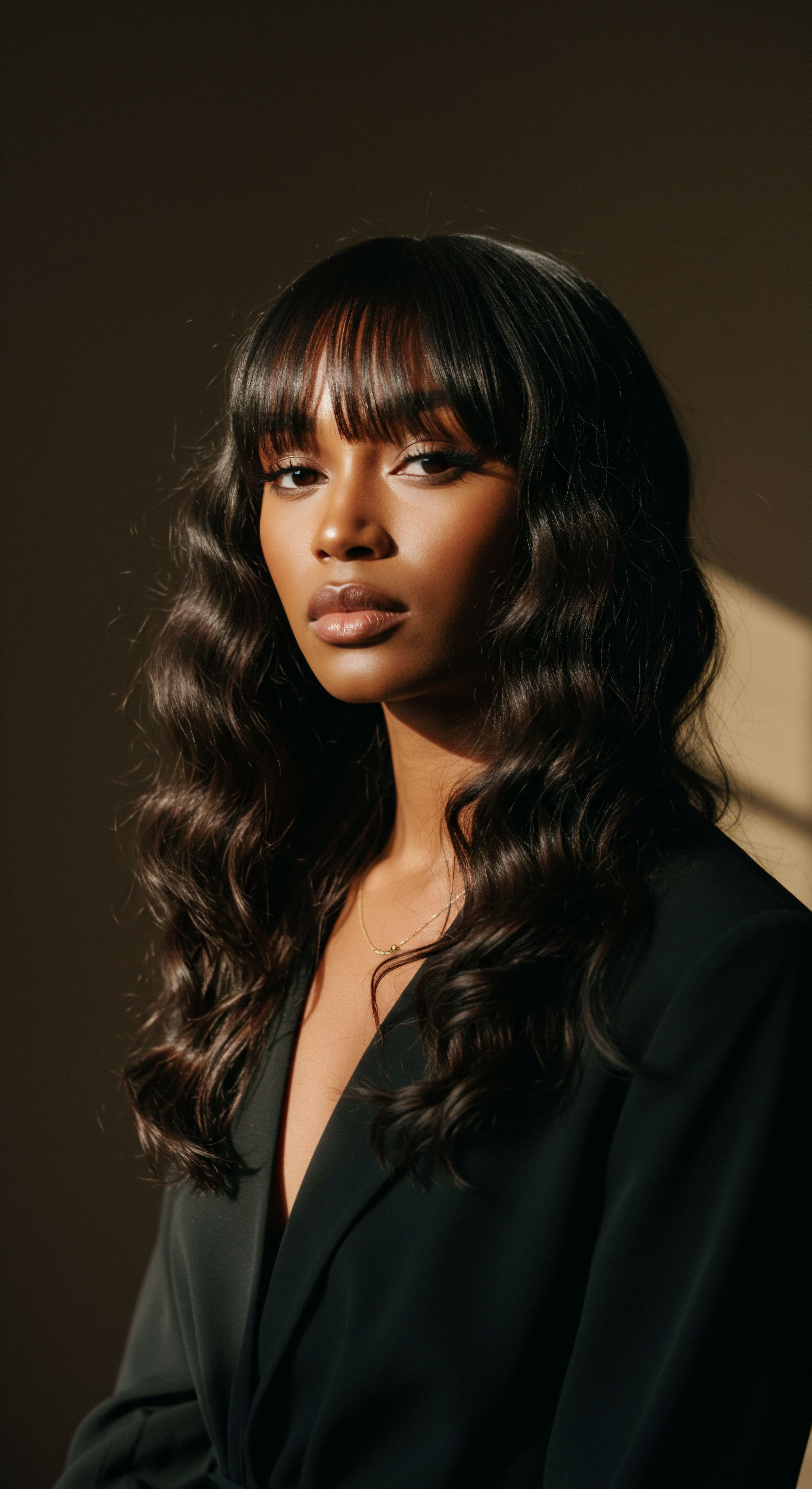
Relay
Having explored the fundamental principles and daily rituals of ancient Egyptian hair care, we now venture into a more nuanced examination, connecting their practices to contemporary scientific understanding and cultural shifts. The intricate interplay of biology, societal expectations, and available resources shaped their hair journeys, much as it does ours. Here, we consider the deeper “why” behind their methods, drawing parallels and contrasts that illuminate the enduring human relationship with hair.
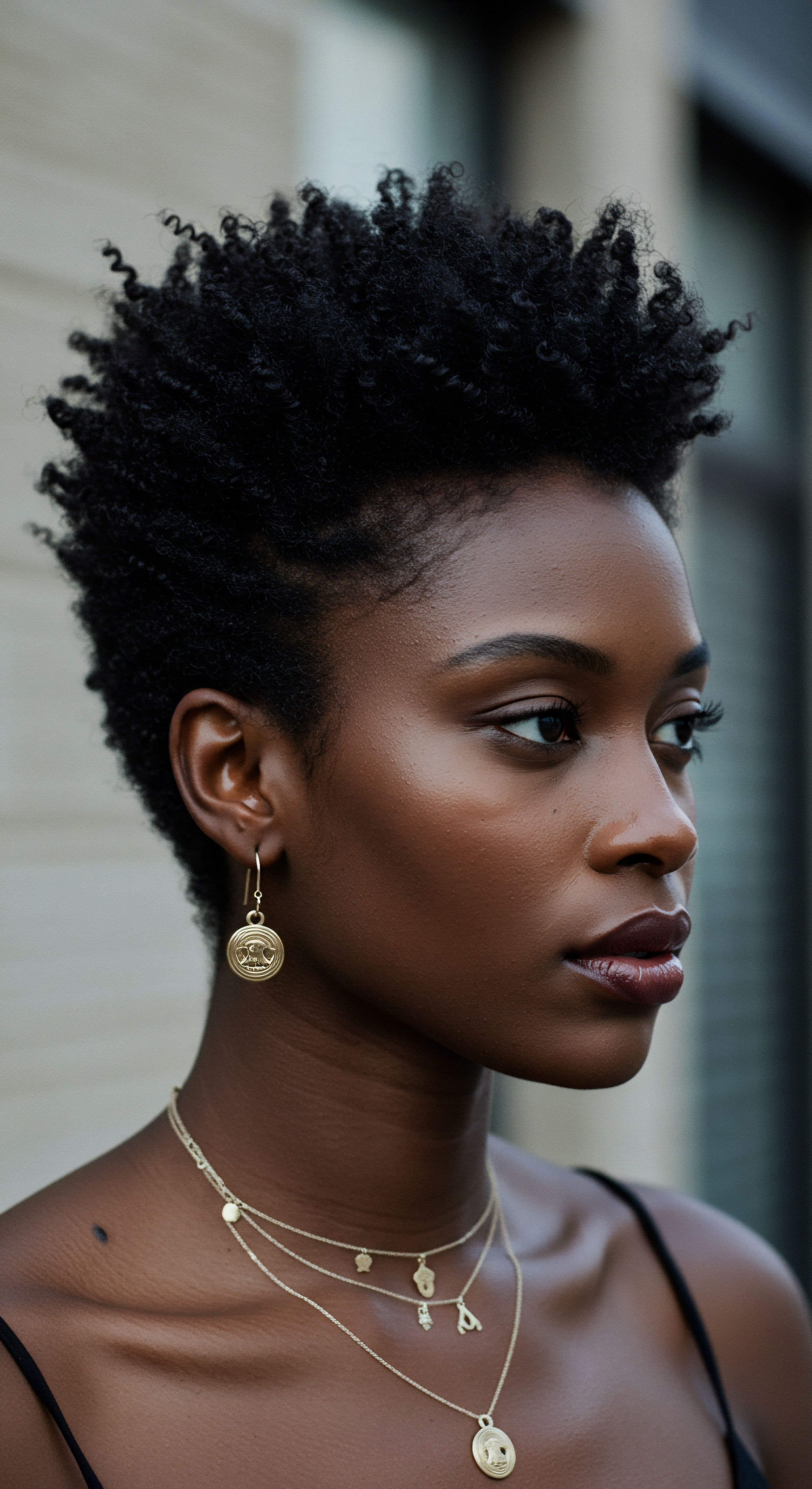
What Did Ancient Egyptians Know About Hair Biology?
While ancient Egyptians lacked the advanced microscopy and chemical analysis tools of today, their long-standing empirical observations provided a functional, albeit non-scientific, understanding of hair biology. They recognized hair loss as a sign of old age and sought remedies for it, as evidenced by medical texts like the Ebers Papyrus, dating back to 1550 BCE. These papyri contained prescriptions aimed at stimulating hair growth and preventing baldness, although their efficacy, by modern standards, was likely limited.
A particularly compelling example of their “scientific” attempts at hair restoration is found in the Ebers Papyrus, which lists a mixture of fats from a Hippopotamus, Crocodile, Tomcat, Snake, and Ibex as a remedy for hair loss. Another prescription suggested porcupine hair boiled in water, applied to the scalp for four days, or even the leg of a female greyhound sautéed in oil with the hoof of a donkey. While these sound bizarre to us, they represent an early, systematic approach to problem-solving within their available knowledge.
The concern over graying hair was also apparent, with remedies like the blood of the “gabgu bird” or deer horn mixed with warm oil proposed for dyeing white hair. This reveals an acute awareness of hair’s changing appearance and a desire to retain youthful vitality.
The recognition of hygiene’s importance, especially in preventing lice, also speaks to an understanding of basic scalp health. Shaving heads and wearing wigs were direct responses to these environmental and parasitic challenges. This practical knowledge, born of necessity and observation, formed the bedrock of their hair care philosophy.

How Do Ancient Hair Treatments Compare to Modern Hair Science?
The parallels and divergences between ancient Egyptian hair care and modern practices are quite striking. While ancient Egyptians relied on empirical knowledge and naturally sourced ingredients, contemporary hair science is rooted in biochemistry, dermatology, and advanced material science.
| Aspect of Care Cleansing Agents |
| Ancient Egyptian Practices Alkaline salts (natron), clay, olive oil mixtures. |
| Modern Practices (Textured Hair Focus) Sulfate-free shampoos, co-washes, micellar cleansers. |
| Aspect of Care Conditioning & Moisture |
| Ancient Egyptian Practices Castor oil, almond oil, moringa oil, honey, animal fats. |
| Modern Practices (Textured Hair Focus) Deep conditioners, leave-in conditioners, hair masks, butters, humectants. |
| Aspect of Care Styling & Hold |
| Ancient Egyptian Practices Beeswax, animal fats (as 'gel'), intricate braiding. |
| Modern Practices (Textured Hair Focus) Gels, mousses, creams, edge controls, curl definers, heat protectants. |
| Aspect of Care Hair Enhancements |
| Ancient Egyptian Practices Wigs (human hair, wool, plant fibers), extensions, beard wigs. |
| Modern Practices (Textured Hair Focus) Wigs (synthetic, human hair), extensions (clip-ins, sew-ins, tape-ins), weaves. |
| Aspect of Care Hair Loss Solutions |
| Ancient Egyptian Practices Animal fat mixtures, porcupine hair, various herbal remedies from papyri. |
| Modern Practices (Textured Hair Focus) Minoxidil, Finasteride, PRP therapy, hair transplants, low-level laser therapy. |
| Aspect of Care Scalp Health Focus |
| Ancient Egyptian Practices Lice prevention (shaving/wigs), oil application for scalp nourishment. |
| Modern Practices (Textured Hair Focus) Targeted treatments for dandruff, dryness, inflammation; microbiome balance. |
The core concerns—cleanliness, moisture, styling, and addressing hair loss—remain constant across millennia. The ancient Egyptians were innovators within their constraints. For instance, their use of a fat-based “gel” to hold hairstyles, as identified in mummy hair analysis, represents a remarkably effective early styling product.
This substance, composed of biological long-chain fatty acids, ensured styles persisted even into the afterlife. Modern styling products, while chemically more complex, serve the same purpose ❉ manipulating and holding hair in a desired form.
The desire for well-cared-for hair transcends time, with ancient Egyptians employing natural fats and plant extracts for effects we now achieve with advanced chemical formulations.
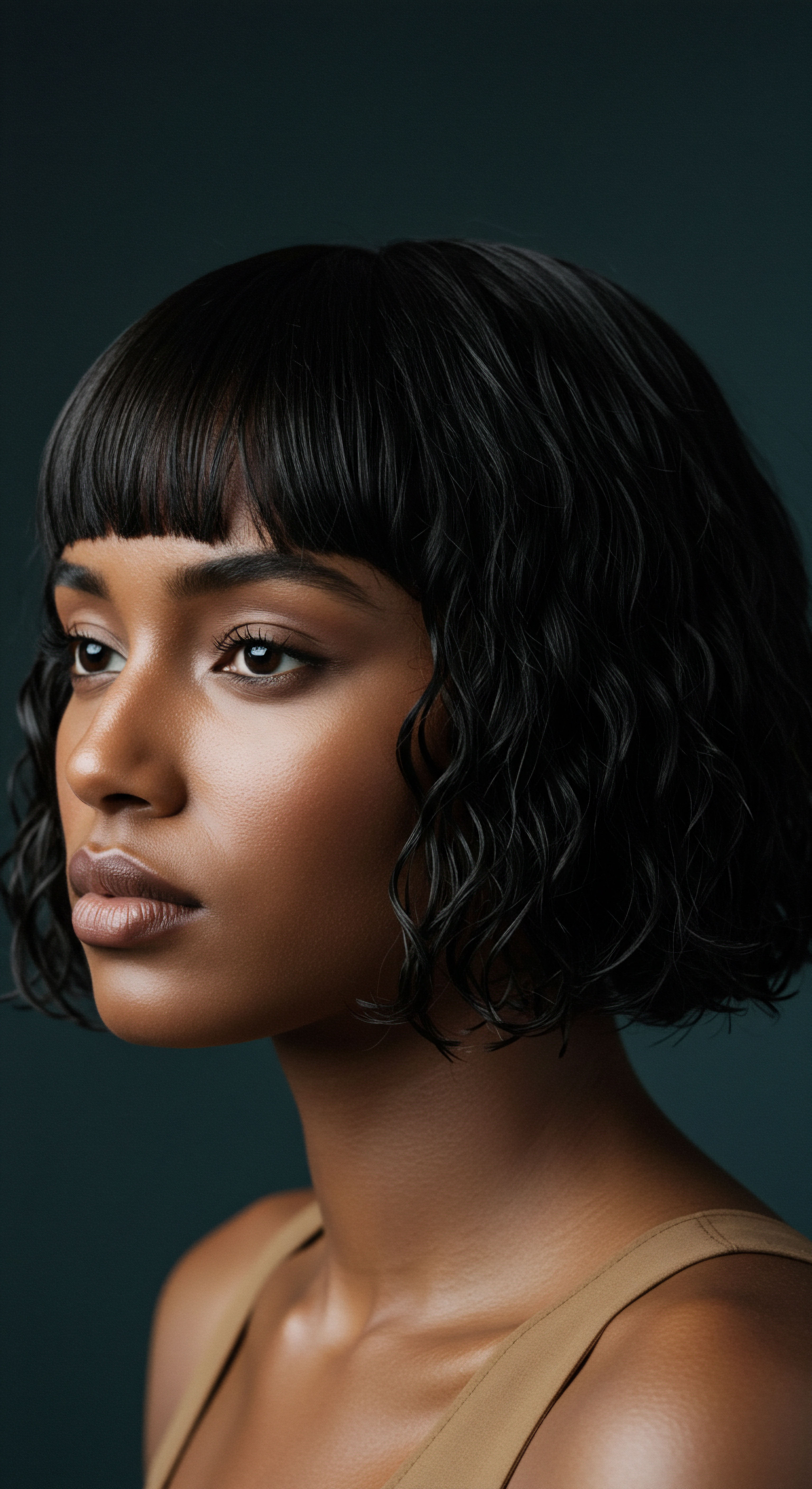
Cultural Context and Societal Impact
Hair in ancient Egypt was not simply a personal choice; it was deeply embedded in social and ritual contexts. Hair length, style, and the wearing of wigs often served as visual markers of social status. Wealthier individuals could afford longer, more elaborate wigs made of human hair, which was a valuable commodity, sometimes valued on par with gold. This demonstrated their ability to command resources and labor.
The influence of the climate also played a role in hair choices. Maintaining long, natural hair was impractical for laborers due to the heat and dirt, whereas those with servants could afford the care required for longer styles. This social stratification, reflected in hair, is a fascinating lens through which to view their society.
A point of discussion arises when considering the modern natural hair movement, particularly within textured hair communities. This movement often emphasizes embracing natural hair textures, moving away from chemical alterations or extensive heat styling. While ancient Egyptians used wigs and extensions, their primary motivation was often hygiene and protection from the elements, along with status. The notion of altering natural hair for aesthetic conformity was present, but perhaps not with the same nuanced discussions around identity and self-acceptance that characterize contemporary textured hair conversations.
Consider the use of henna in ancient Egypt, derived from the Lawsonia plant, to dye hair a reddish tint and condition it. This natural dye, still widely used today, stands as a direct lineage of ancient practices influencing modern hair colorants, particularly in communities seeking less chemical-intensive options. The longevity of practices like sugaring for hair removal also speaks to the enduring efficacy of ancient methods. These examples highlight a shared human desire for appearance management, adapting to available resources and evolving cultural meanings.

Reflection
The journey through ancient Egyptian hair care, set against the backdrop of our modern textured hair practices, reveals a fascinating continuum of human aspiration. From the meticulous crafting of wigs to the anointing of strands with precious oils, the Egyptians pursued hair wellness with a dedication that resonates across millennia. Their understanding, while empirical, laid a foundation for the principles we still hold dear ❉ cleanliness, protection, and the profound connection between hair and identity.
We find ourselves, in many ways, standing on the shoulders of these ancient innovators, continuing their quest for hair that not only looks its best but also tells a story of care, culture, and self. The echoes of their rituals, from the humblest comb to the most elaborate wig, remind us that the pursuit of radiant hair is a timeless dance, ever evolving yet always rooted in the essence of who we are.
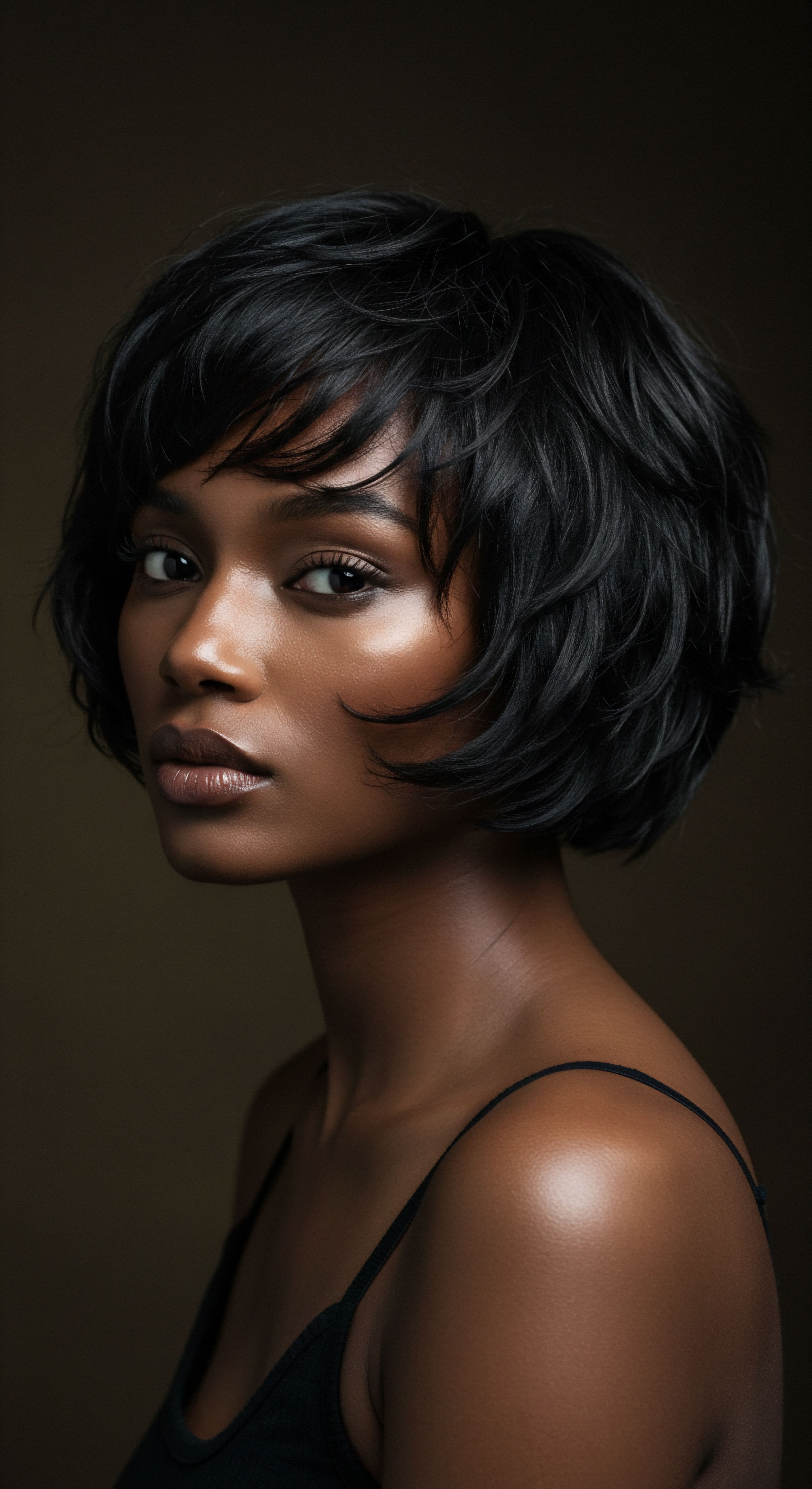
References
- Cirlot, J.E. (2001). A Dictionary of Symbols. London.
- Fikry, M.E. (1972). Senescence, Senility and Geriatric Medicine, Vol. I, Medical Diseases of the Aged. The Public Organization for Books and Scientific Appliances, Cairo.
- Fletcher, J. (1995). Hair and Hairdressing in Ancient Egypt. Ph.D. Thesis, University of Manchester.
- Gattuso, R. (2025). From Ancient Egypt to Modern Beauty ❉ Timeless Cosmetic Secrets. Egyptra Travel Services.
- Kamal, H. (1991). The Ancient Egyptian Medicine, 1st Edition. Madbouli Library.
- McCreesh, N. et al. (2011). Ancient Egyptians used ‘hair gel’. Journal of Archaeological Science.
- Redford, D. (2001). The Oxford Encyclopedia of Ancient Egypt, Vol. II. Oxford.
- Robins, G. (2020). Hair, Gender, and Social Status in Ancient Egypt. JSTOR Daily.
- Rosalin, M. & Janssen, J.J. (1996). Getting Old in Ancient Egypt. London.
- Smith, G.E. (1912). Catalogue Général des Antiquités Égyptiennes du Musée du Caire ❉ Nos 61051-6100, The Royal Mummies. Le Caire ❉ Imprimerie de L’Institut Français D’archéologie Orientale.
- Smith, G.E. & Dawson, W.R. (1924). Egyptian Mummies. London.
- Wagstaff, T. (2023). The Ebers Papyrus ❉ Ancient Egyptian Beauty, Healing, and Wellness Secrets.